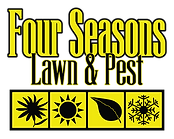Keeping Your Lawn Moss-Free: Tips from Your Local Lawn Care Experts
- Tyson Woodbury
- Mar 21, 2024
- 2 min read
We understand the frustration that comes with seeing moss invade your once-lush green lawn. Moss is a common problem in our region, particularly in the Inland Northwest, where our climate and environmental conditions provide ideal breeding grounds for this pesky plant. But fear not, because we're here to guide you through understanding why moss grows in your lawn, how to prevent it, and what steps you can take to treat and remove it effectively.
Understanding Moss Growth:
Before diving into prevention and treatment, let's explore why moss takes root in your lawn in the first place. Several factors contribute to moss growth:
1. Shade: In our densely forested region, shade from trees and buildings can prevent sunlight from reaching your lawn, creating favorable conditions for moss to thrive.
2. Poor Drainage: Excessive moisture, whether from heavy rainfall or poor drainage, creates an environment where moss can outcompete grass for nutrients and space.
3. Compacted Soil: Compacted soil restricts water and air flow to grass roots, weakening the turf and providing an opportunity for moss to establish itself.
4. Low Soil pH: Acidic soil conditions, common in our area, can inhibit grass growth while promoting moss colonization.
5. Neglected Lawn Care: Lack of proper lawn care practices such as mowing too short or infrequent fertilization can weaken grass and make it more susceptible to moss invasion.
Prevention Strategies:
Now that we understand the causes of moss growth, let's discuss five effective ways to prevent it:
1. Improve Drainage: Address any drainage issues by aerating your lawn regularly, filling low spots, and installing proper drainage systems if needed.
2. Increase Sunlight Exposure: Trim back overhanging branches and prune shrubs to allow more sunlight to reach your lawn.
3. Core Aeration: Regularly aerate your lawn to reduce soil compaction and improve grass root health.
4. Adjust Soil pH: Test your soil pH and amend it as necessary to achieve a slightly acidic to neutral pH range, which is optimal for grass growth and less favorable for moss.
5. Proper Lawn Care: Maintain a consistent lawn care routine, including regular mowing at the appropriate height, overseeding to promote dense grass growth, and applying balanced fertilizers as needed.
Treatment and Removal:
If moss has already invaded your lawn, don't worry. Here's how you can effectively treat and remove it:
1. Rake and Remove: Use a rake to gently remove moss from your lawn, being careful not to damage the grass. Dispose of the moss properly to prevent reinfestation.
2. Moss Killer: Apply a moss killer product specifically formulated for lawns, following the manufacturer's instructions carefully.
3. Dethatching: If your lawn has a thick layer of thatch, consider dethatching to improve air circulation and reduce moss habitat.
4. Overseed: After removing moss, overseed your lawn to fill in any bare patches and prevent moss from reestablishing.
5. Regular Maintenance: Continue to maintain good lawn care practices to prevent moss from returning.
At Four Seasons Lawn and Pest, we're committed to supporting you in maintaining a lush, green lawn that brings joy to your outdoor space. Remember, by staying positive and remaining consistent with your lawn care efforts, you're taking proactive steps toward a healthier, moss-free lawn. Together, let's keep up the great work and ensure your lawn remains a beautiful haven for you and your family to enjoy.

.png)




Comments